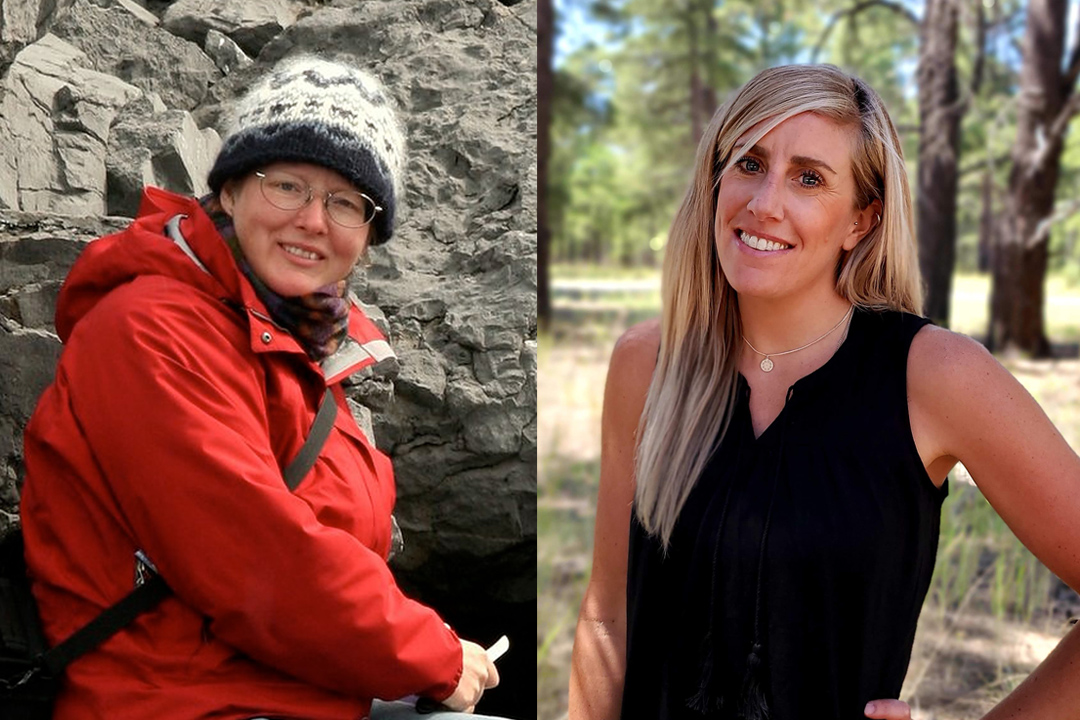
More frequent wildfires in the boreal forest threaten previously protected soil carbon
USask part of international team publishing Nature paper
SASKATOON – As major wildfires increase in Canada’s North, boreal forests that have acted as carbon sinks for millennia are becoming sources of atmospheric carbon, potentially contributing to the greenhouse effect.
That’s the conclusion of an international research team that involves University of Saskatchewan (USask) adjunct researcher Jill Johnstone and recent USask PhD graduate Xanthe Walker who is now a post-doctoral researcher at the Center for Ecosystem Science and Society at Northern Arizona University (NAU). The findings were published Aug. 21 in the prestigious journal Nature.
“This study underscores why more frequent burning in the boreal forest due to wildfires is bad from a climate perspective,” said Walker, lead author on the paper.
The research was launched in the aftermath of the severe 2014 fires in the Northwest Territories (N.W.T)—the largest fire season in the region’s recorded history. Funded by the N.W.T government and agencies such as NSERC and NASA, the project aims to better understand what happened to boreal forest soils during these fires, knowledge that could improve forest and fire management and help northerners plan and adapt.
“We know that there is really old carbon in these soils—carbon that is hundreds to thousands of years old, carbon that is irreplaceable,” said Michelle Mack of NAU, senior author on the paper who worked with Walker and other NAU collaborators on the study.
Carbon is critical to soil function and productivity. Between forest fires, boreal soils accumulate carbon and are a globally significant carbon sink: boreal forests store about one-third of the world’s terrestrial carbon, primarily in soils. These pools of old carbon in the soil have been historically safe from combustion, since only some of this carbon is released when the forests undergo a fire.
But with warming of the forest climate and larger and more frequent wildfires, more of this sequestered carbon is being combusted and released—what the researchers describe as “mining” the carbon from the soil.
“The combustion of this “legacy carbon” in the soil has the potential to shift the global carbon cycle, as boreal forests that have acted as carbon sinks for millennia become sources of atmospheric carbon,” said Johnstone, who began this work with former PhD student Walker as a professor at USask and is now an adjunct USask biology professor living in the Yukon. “This could potentially accelerate climate warming.”
The research team, led by Northern Arizona University scientists, included the Northwest Territories (N.W.T.) government, four Canadian universities, University of Alaska–Fairbanks, and Woods Hole Research Center.
Walker and a large field group of researchers and students from Canadian universities hiked into the N.W.T. burn areas to sample the soil at more than 200 burned areas identified by Laval University researchers on maps derived from remote sensing.
“These were large and severe fires, and we thought: this is when and where it would burn,” said Walker, referring to old pools of legacy carbon.
The team found that in older stands of trees, legacy carbon remained protected from combustion, but in stands younger than 60 years old, legacy carbon burned.
“In older stands that burn, this carbon is protected by thick organic soils,” said Walker. “But in younger stands that burn, the soil does not have time to re-accumulate after the previous fire, making legacy carbon vulnerable to burning. This pattern could shift boreal forests into a new domain of carbon cycling, where they become a carbon source instead of a sink.”
To estimate the age of the carbon in the soil, the team used radiocarbon dating which measures the abundance of 14C carbon isotope in a soil sample. Carbon dating enables researchers to gather clues about how long certain carbon stores have been in the soil.
“Carbon accumulates in these soils like tree rings, with the newest carbon at the surface and the oldest carbon at the bottom,” said Mack. “We thought we could use this layering to see how far back in time, in the history of the forest, fires were burning.”
In nearly half (45 per cent) of the young stands the researchers sampled, legacy carbon burned. And while the amount of legacy carbon did not alter total carbon emitted from these fires, the pattern the researchers identified has global implications for future climate scenarios.
“The frequency of boreal forest fires is projected to increase even more with expected climate warming and drying, and as a result total burned area is expected to increase 130 to 350 per cent by mid-century,” the authors write. This increase in the burn area would expand the proportion of young forests vulnerable to burning and loss of legacy carbon.
“By defining and analyzing ‘legacy carbon,’ this paper offers a new way to think about long-sequestered carbon stocks in boreal forests and how vulnerable they are to being burned during increasingly frequent and severe wildfires,” said Brendan Rogers, a scientist at Woods Hole Research Center who co-authored the study. “This carbon-dating tool helps us understand when burning goes ‘outside the norm’ from a historical perspective and begins to combust carbon stocks that survived past fires.”
Research published last year by this group confirmed that the 2014 N.W.T. fire season, which burned more than 2.8 million hectares, released an estimated 94.5 terra-grams of carbon—equivalent to half the annual carbon uptake from vegetation across all of Canada that year (Global Change Biology)
Jennifer Baltzer Wilfrid Laurier University researcher and a co-author of the study, said, “This research, with the help and partnership of the N.W.T. government, has really advanced our understanding of these fires and the tremendous impact extreme wildfire years have on globally critical stores of carbon.”
-30-
For more information, please contact:
Jennifer Thoma
USask Media Relations
306-966-1851
Jennifer.thoma@usask.ca

